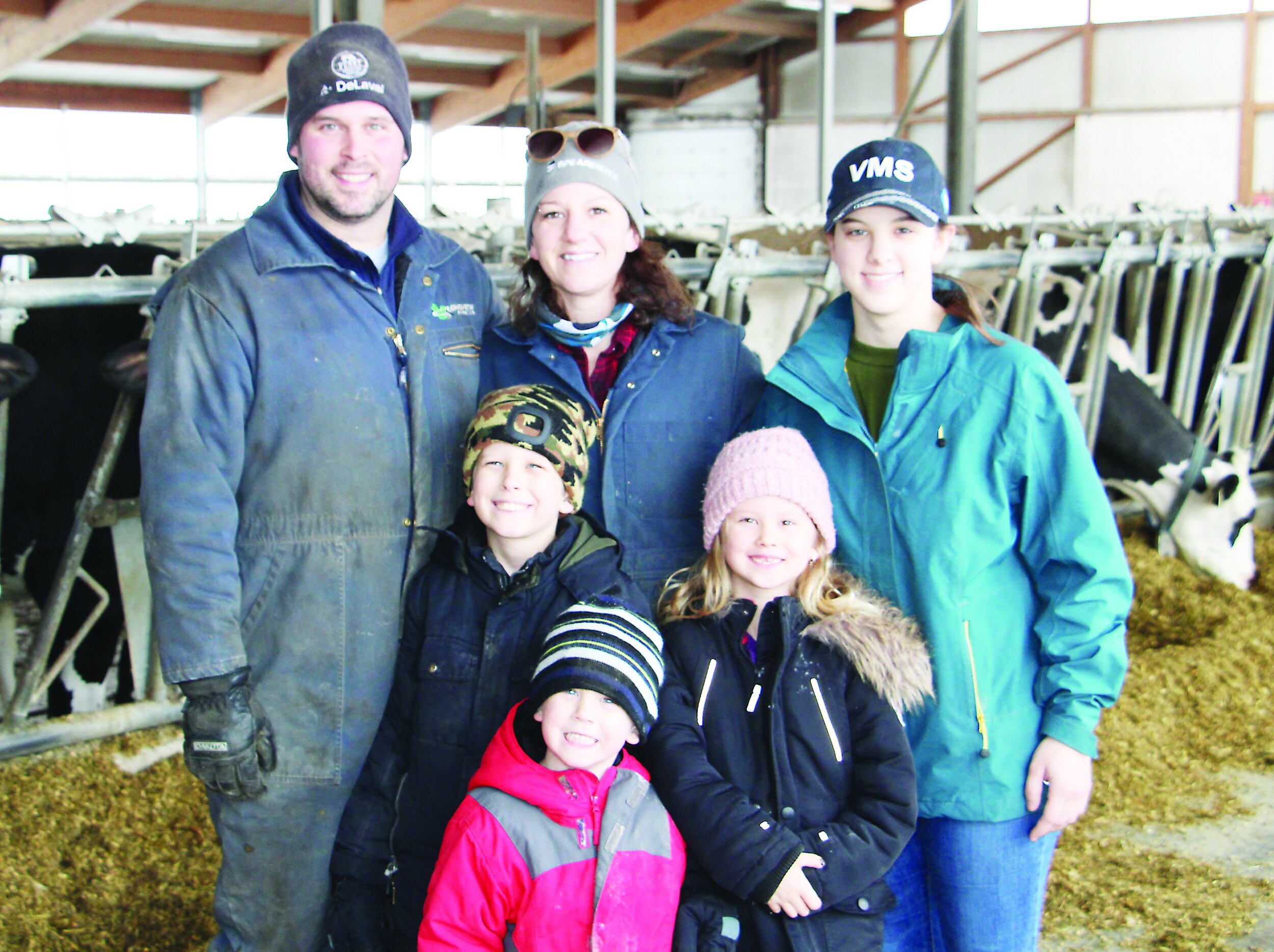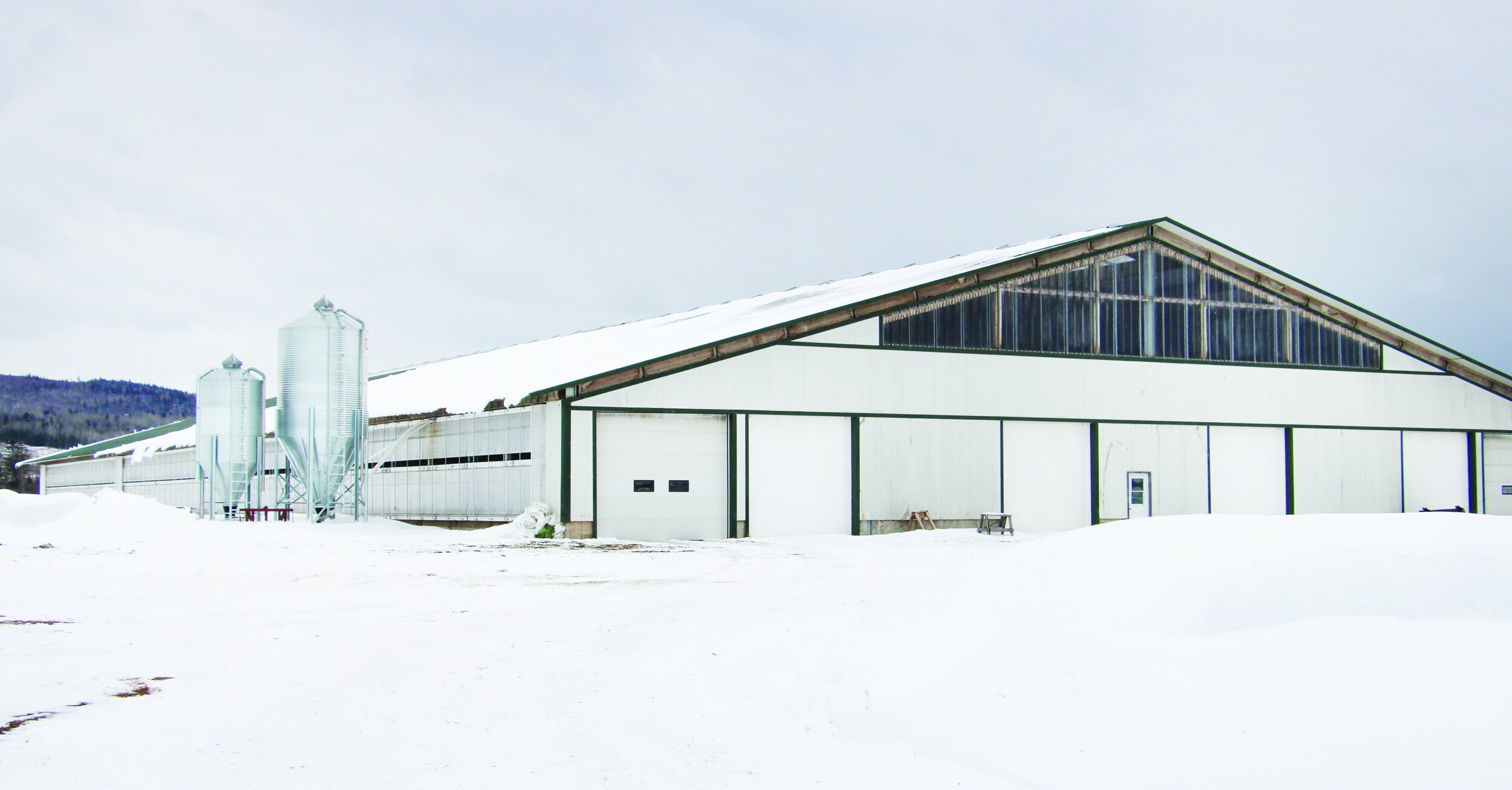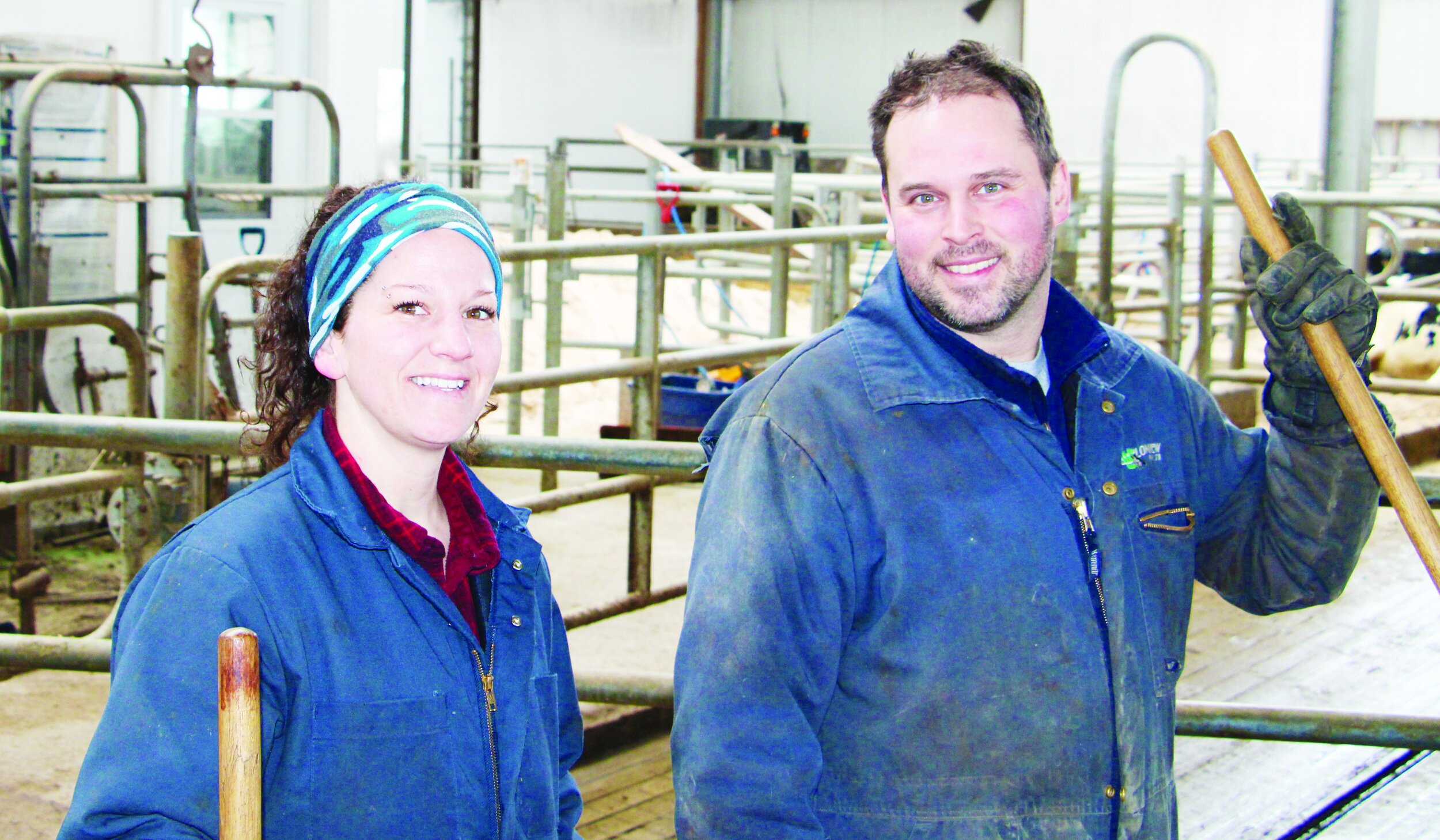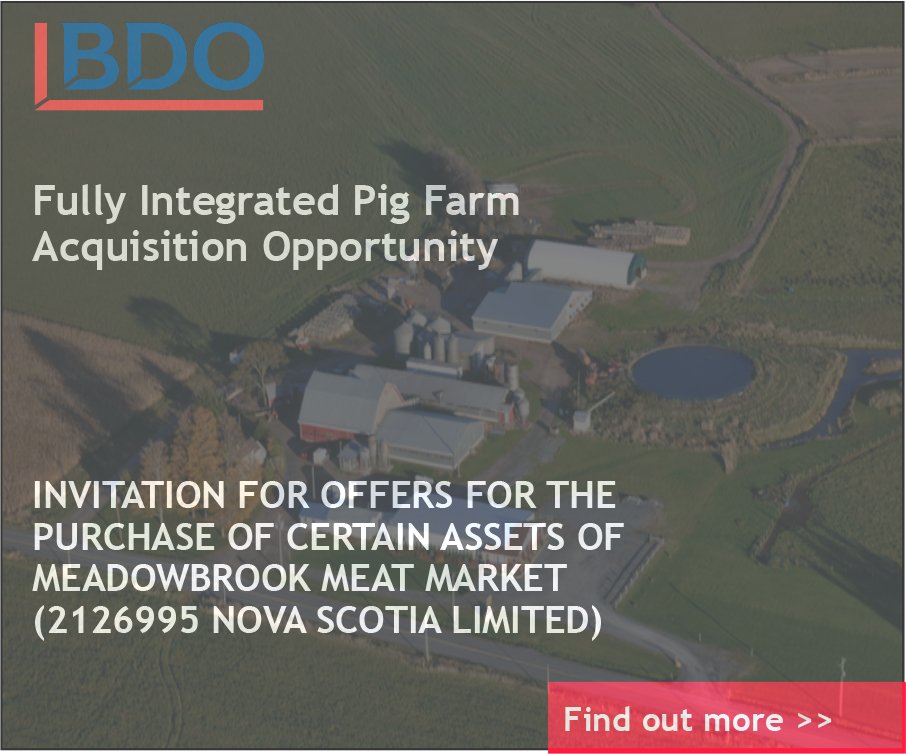Visit home for a wedding led to dairy farm succession
/by George Fullerton
Lonsview Farm of New Line, N.B., south of Sussex, was recently named the Kings County Soil and Crop Improvement Association’s farm of the year. Eric Walker and his partner Krystal Krick own and manage the farm, milking 165 cows.
Three generations of dairy barns are readily apparent upon entering the farmstead yard. Walker’s grandfather bought the farm and worked out of a hip-roofed bank barn. Walker’s parents Ruth and Daryl eventually constructed a free-stall barn with a double-four parlour, milking up to 75 cows and raising heifers in the old barn. Walker and Krick constructed a new barn in 2017 designed to milk 240 cows with four robots.
In 2019, through New Brunswick’s new entrant dairy program, Walker’s sister Janet began milking around 50 cows in the old free-stall barn with one robot. Her enterprise required surveying the old free-stall barn and splitting it off from the Lonsview Farm property, making the two operations distinct. She negotiated a deal with her brother to provide her with silage.
Following high school graduation, Walker attended McGill University in Montreal, initially studying science and then switching to commerce. Following university graduation, he worked as a Royal Bank commercial lender in Alberta from 2005 to 2009.
“I really liked dairy farming but our family had never discussed succession,” said Walker. “In 2009, I was home to attend a wedding and my father indicated he was interested in slowing down. The subject of succession was discussed, and I expressed interest in taking over the dairy operation. I had developed a good deal of experience through commercial lending, so we had a family meeting and set the succession process in motion.”
Walker and Krick returned to Lonsview in 2010 and set to work adding 70 feet to the free-stall dairy barn to expand the milking string from 75 to 125. At the time, the forage supply included corn and forage grasses stored in two tower silos and two bunker silos, with excess crop production packed in heaps.
Walker’s father has been an active member of the Kings County Soil and Crop Improvement Association, and Walker became a member when he assumed farm management. He said association staff have provided soil sampling, mapping, and general services.
Walker was active with the Sussex Holstein Club and was a member of the New Brunswick Young Farmers Forum from 2012 to 2017. He became an Agricultural Alliance of New Brunswick (AANB) director, serving two terms from 2010 to 2016, and was reappointed to the AANB board earlier this year.
CROPLAND NEAR THE FARM
“When I decided to farm, I wanted the cropping land to be adjacent to the farm,” said Walker. “I knew it would make us more efficient, so we began purchasing land in 2017, and we went on to clear woodland and bring it into agriculture production.”
Lonsview Farm currently totals 650 acres.
Cropping land improvement projects have included an ambitious tile drainage program, which has improved 140 acres.
New land development includes root raking and land levelling followed by “as much manure as we can get on it,” said Walker. It’s then planted to grass or triple mix.
The cropping program includes 200 acres in corn and 350 to 400 acres in grass forage. The current rotation is three years in corn and four years in grass, while some wetter land is managed as permanent no-till grass production.
Manure is spread in the spring and in the autumn and following each forage harvest.
Walker said the farm has added some innovative equipment to accelerate harvesting. Mowing is done with a 10-foot front-mounted mower in combination with an 11-foot trailing mower. Last year, a windrow merger was added to the trailing mower to double up windrows. A recently purchased Dion forage harvester with a 10-foot pickup has the capacity to handle big windrows.
Silage is stored in a combination of tower and bunker silos, ag bags, and wrapped round bales.
PLANNING FOR NEW BARN
Walker began actively planning to build a new barn in 2015, eventually settling on a Wolf System structure prefabricated in Austria and constructed by Ontario-based ThermoEnergy Structures Inc.
The barn frame is a combination of steel and laminated wood framing with insulated sandwich roof and wall panels and an 18-foot skylight. The barn was constructed in 2016 and 2017.
“I initially saw the design at an ag show and initially avoided it because the illustrations, in my mind, put it out of my budget range,” said Walker. “After I had a conversation with the sales rep, I was inspired by the product and we worked over six months to detail out my design. The laminated beams have a higher fire rating and are more economical compared to steel, as well as providing a greener footprint.”
The design allows for 240 cows milking with four robots. They’re currently milking 165 with three robots.
The cows are on sand bedding and manure is cleared by automatic alley scrapers. The barn contains a large office with a window overlooking the free stalls, robots, dry cow section, and calving pens.
The barn is equipped with cameras, which allow for remote visual contact anytime.
Walker said that with data generated from the robots, more and more management is done at the computer screen.
The milk herd is divided into two groups – new heifers and mature cows. The top 20 percent of the heifers are bred with sexed semen to birth females with high production potential. The next 40 percent are bred to genomic bulls and the bottom 40 percent are bred to beef bulls.
The dry cow section is in the new barn. There are two dry cow groups and the new management strategy has nearly eliminated the occurrence of milk fever.
MOVING CATTLE AROUND
Newborn calves are moved into isolation pens, inoculated, and fed their mother’s colostrum. After five days, they’re moved into a pen of six calves for five days and then into a large group pen for 66 days. The young calf ration includes milk replacer, grower pellets, and hay.
At 73 days, heifers move to the first-generation hip-roof barn where they remain in groups until six months of age. They then move to a 50-by-140-foot tarp-roofed barn, which houses around 80 heifers.
Bred heifers are moved into the milk barn 60 days prior to calving and are familiarized with the robot milker.
Krick handles the farm accounts and a portion of herd and other farm management tasks from the barn office. She rounds out her schedule with home and school activities, administration work with a cadet corps, and other community work.
Krick and Walker have six children – Seth and Levi Nicholas (both working in Western Canada), and Hali Krick and Aden, Ella, and Izah Walker living home on Lonsview Farm.













